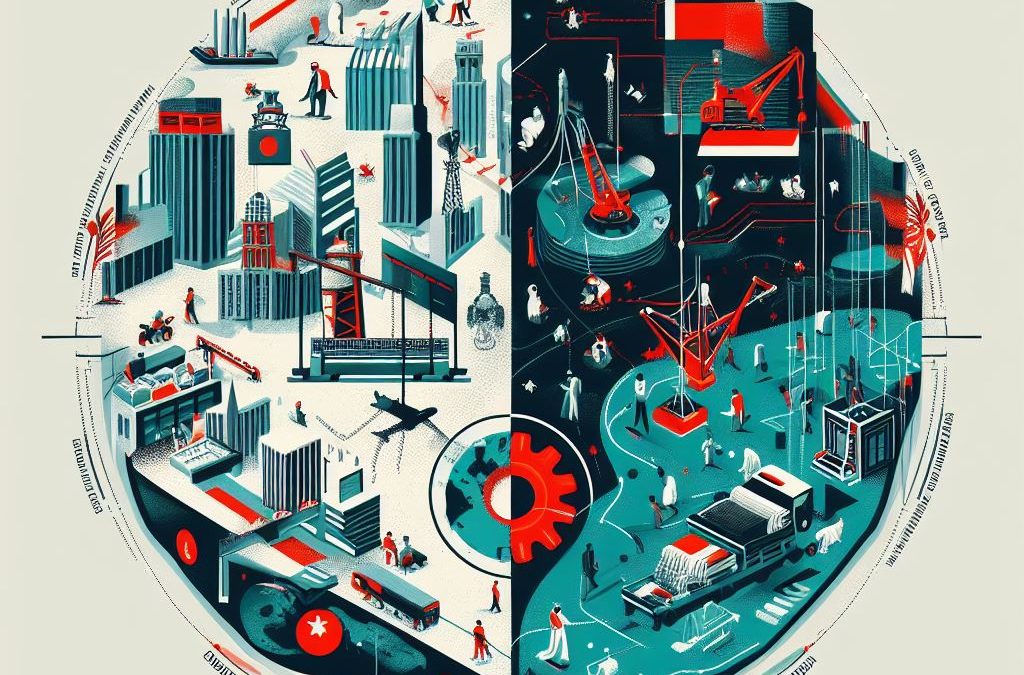The apparel manufacturing industry in Bangladesh plays a pivotal role in the country’s economy, contributing to over 80% of its exports and employing a significant portion of its workforce. However, the industry faces numerous challenges, both globally and within Bangladesh, that impact its efficiency and the wellbeing of its workers. This article provides an overview of these challenges, potential solutions, and the role of manufacturers in the supply chain, serving as a lead-in to three in-depth articles on these topics.
The Apparel Manufacturing Supply Chain: Challenges and Solutions
The global apparel manufacturing supply chain is a complex network that spans across continents, from raw material suppliers to final retailers. This complexity brings with it a multitude of challenges, many of which significantly impact the industry’s efficiency and the wellbeing of its workers. These challenges range from poor working conditions and labor rights violations to long lead times, inefficient processes, and lack of technology adoption.
In Bangladesh, the country’s reliance on apparel manufacturing amplifies some challenges and introduces others that are specific to its national context. For instance, Bangladesh’s competitive advantage in the global apparel industry is its low-cost labor. However, this leads to challenges in ensuring fair wages and decent working conditions. The lack of technology adoption is stark in Bangladesh, with only 5% of factories using automation. Most still heavily rely on manual processes, which can be slow and inefficient.
Despite the numerous challenges facing the global apparel manufacturing supply chain, there are several potential solutions that can address these issues, improve efficiency, and enhance the welfare of workers. These solutions include investment in skills training and education, adoption of new technologies, development of supporting industries, government incentives, and improvements in infrastructure. For a more detailed discussion on these challenges and solutions, refer to the article, Challenges and Solutions in the Apparel Manufacturing Supply Chain: A Focus on Bangladesh.
Impact of Global Supply Chain Disruptions on Bangladesh’s Apparel Manufacturers
The deeply interconnected nature of the global economy means that disruptions in one part of the world can have significant ripple effects elsewhere. One such example is the impact of global supply chain disruptions on Bangladesh’s apparel manufacturers. The COVID-19 outbreak, Brexit, the US-China trade war, and climate change events have all disrupted global supply chains, with significant impacts on Bangladesh’s apparel industry.
These disruptions have led to raw material shortages, order cancellations, financial strain on manufacturers, and impact on workers. To mitigate some of the impacts of global disruptions, the government has provided supports such as stimulus packages, tax rebates, and loans. However, more policy interventions are likely needed, including investment to strengthen domestic supply chain capabilities. For a more comprehensive analysis of these disruptions and their impact, refer to the article, Impact of Global Supply Chain Disruptions on Bangladesh’s Apparel Manufacturers.
The Integral Role of Manufacturers in the Supply Chain
Manufacturers in Bangladesh shoulder a multitude of responsibilities in the supply chain, from sourcing and procurement to manufacturing processes, working with buyers, compliance, shipment and logistics, and employment generation. However, they face numerous challenges, including fluctuating raw material costs, demands from buyers, compliance with changing regulations, and labor issues.
To overcome these challenges and ensure compliance with international standards, manufacturers are taking several initiatives. These include technology and machinery upgrades, adoption of lean manufacturing principles, employee training and welfare, use of IT systems, formation of industry associations, and exploration of near-shoring production. For a more in-depth look at the role of manufacturers in the supply chain, refer to the article, Role of Manufacturers in the Supply Chain.
Conclusion
The intricacies of Bangladesh’s apparel manufacturing sector might seem daunting, but they also present opportunities for growth, enhancement, and responsible practices. By integrating strategic approaches, the sector can reach new heights in efficiency while ensuring the welfare of every stakeholder. Bangladesh’s apparel manufacturing horizon shines with potential, and the solutions addressed within this article and its associated readings map out a path towards a brighter, sustainable, and equitable future. As we collectively forge ahead, with collaboration from brands, manufacturers, governments, NGOs, and the diligent workforce, we can set the apparel manufacturing supply chain not only as a pivotal contributor to the global economy but also as an epitome of fairness and sustainability. If you’re looking to be part of this transformative journey and seek a committed manufacturing partner who emphasizes quality control, affordability, and the fair treatment of both environment and employees, reach out to us. Get a quote from Brandex Sourcing today. Let’s collaborate for a sustainable tomorrow.

